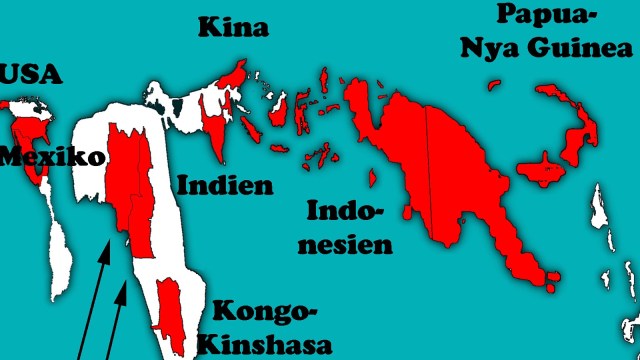233 – The Dutch Moisturize Mars
The pessimist mourns the glass’s half-emptiness, the optimist rejoices that it’s semi-full and the engineer just thinks the glass is twice the size it should be. What would a space engineer think of this map of Mars, half underwater?
Although scientific evidence now indicates there once was water on Mars – laying to rest a controversy that has raged ever since ‘canals’ were detected on its surface – the Red Planet nowadays is rather rocky and definitely dusty, and not even close to moist. To map Mars as if it’s covered with oceans, seas and bays is clearly too Terra-centric.
It might help to know that this map of of a semi-submerged Mars is of Dutch origin. As the Dutch have always struggled to keep their country above sea-level, they might find it impossible to imagine a world without encroaching seas. This map therefore may say less about the precarious environment of Mars than about that of the Netherlands itself, a country not coincidentally named for its disadvantageous position vis-à-vis the North Sea.
None of which explains, however, why this vision of Mars would be upside down, with the Zuidpool (South Pole) at the top and the Noordpool (North Pole) at the bottom of the map. Maybe Dutch engineering isn’t what it used to be.
The map shows several continents protruding from the Martian waves. In the southern (top) hemisphere, these are:
And then there are Dreyer Island, Phillips Island and the Lagrange Peninsula, some smaller bits of dry or semi-dry land. In the northern (bottom) hemisphere, the continents are:
These congregate just north of the equator. Further below are Laplace Land, Leverier Land and Rosse Land I and II (a land so nice they named it twice).
The continents seem to be named after astronomers (a few immediately recognisable as such are Keppler, Huyghens, Cassini and Herschel). It’s unclear whether the same applies for the bodies of water, these ones on the western (or is that eastern, since it’s upside down; in any case, the left) hemisphere:
On the other hemisphere, there are:
A number of other capes, bays, channels and other geographical features are also named.
What if this map of Mars had not been consigned to the dustbin of astrogeology? Imagine the reality of this vast aquatic planet confirmed by ever more powerful telescopes, and eventually satellites and probes. With its land and water fighting for prominence, a vast, virgin version of the Netherlands. Perhaps it would have motivated the Dutch to stake their claim on the Red Planet, and put those centuries of water management to good use on another world.
This map, unfortunately undated and unsourced, was taken from the Agile Rabbit Book of Historical and Curious Maps.





